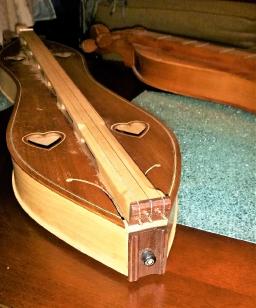@cbrown, you might want to contact @bob-stephens. He is a luthier who had been making steel-string dulcimers for a while but recently developed a nylon-string model. I think he tried unsuccessfully to simply put nylon strings on his older models so he designed a new model specifically for nylon strings. I don't know enough about instrument construction to understand the differences, but I think his nylon-string dulcimers have many different design elements, from bracing inside the box to the way the fretboard connects to the rest of the instrument.
--
Dusty T., Northern California
Site Moderator
As a musician, you have to keep one foot back in the past and one foot forward into the future.
-- Dizzy Gillespie






